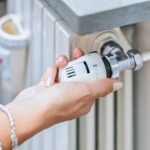Electric floor heating offers unparalleled comfort during chilly months, but what happens when you encounter cold spots on your supposedly warm floor? Addressing this issue not only maintains your comfort but also ensures the efficiency of your heating system. Uncover the root causes behind these bothersome cold areas and arm yourself with the know-how to solve this common problem effectively.
- Explore fundamental reasons behind cold spots and how a troubleshooting matrix can simplify problem identification.
- Learn about typical causes like improper installation, damaged elements, or inadequate insulation, crucial for addressing heating inefficiencies.
- Implement the troubleshooting matrix to systematically diagnose and fix cold spots, ensuring optimal performance of your system.
By reading on, you’ll be equipped to tackle cold spots head-on, maximizing both comfort and efficiency in your home. Share your solutions to help others enhance their heating systems too.
Understanding Electric Floor Heating Cold Spots: Troubleshooting Matrix Guide
Electric floor heating systems are highly valued for providing consistent warmth and enhanced comfort. However, cold spots can sometimes occur, disrupting the even distribution of heat.
There are several fundamental reasons behind these cold spots, undermining the effectiveness and efficiency of your heating system. Understanding these causes is the first step in resolving issues and maintaining optimal functionality.
A troubleshooting matrix is an invaluable tool that helps homeowners and technicians alike to systematically identify and address the underlying issues of cold spots. By providing a structured approach, this matrix simplifies problem identification, making it easier to diagnose and remedy inefficiencies in electric floor heating.
This guide aims to unveil the common culprits behind cold spots and demonstrate how a troubleshooting matrix can be used to achieve consistent and efficient floor heating. As a dedicated resource, this content will ensure that your system delivers the warmth you expect, enhancing both comfort and energy efficiency.
Identifying Common Causes of Heating Inefficiencies
Recognizing the factors that contribute to heating inefficiencies can drastically reduce the occurrence of cold spots in electric floor heating systems. Various elements can lead to these unwelcome interruptions, impacting the performance and reliability of your heating solution.
Improper Installation: One of the primary reasons for cold spots is improper installation. When heating wires are not spaced correctly or are improperly connected, it can result in uneven heat distribution.
Damaged Heating Elements: Over time, heating elements may become damaged due to physical strain or manufacturing defects. Such impairments can disrupt the flow of electricity, leading to cold areas on your floor.
Inadequate Insulation: Efficient floor heating heavily depends on proper insulation. Without appropriate insulation, much of the heat may escape downward, resulting in cooler, less effective surface temperatures.
Being aware of these common causes can help you take preventative measures during installation or maintenance. By addressing these issues proactively, you can enhance the efficacy of your electric floor heating system and enjoy smooth, uninterrupted warmth across your living spaces.
Effectively Using the Troubleshooting Matrix in Electric Floor Heating Cold Spots: Troubleshooting Matrix Guide
To ensure optimal performance of your electric floor heating system, identifying and rectifying cold spots promptly is crucial. The troubleshooting matrix is an efficient tool, designed to streamline the process of diagnosing and addressing these issues. Implementing this matrix will help you pinpoint problem areas and apply targeted solutions, thereby enhancing the overall efficiency and comfort provided by your heating system.
Begin by conducting a detailed visual inspection of your heating system. Look for any visible damage or irregularities, such as cracks in tiles or disruptions in the floor surface. Anomalies in the floor structure can often indicate underlying issues with the heating elements.
Once you’ve completed the visual check, utilize a thermal camera to gain insights into your system’s performance. Thermal imaging will reveal temperature inconsistencies across the heated floor, highlighting areas that may need attention. Note these regions as they will inform the next steps in your troubleshooting matrix.
Next, evaluate the electrical connections and wiring configurations. Loose or faulty connections can disrupt heat distribution, leading to cold spots. Ensure all connections are secure, and that wiring is intact and properly insulated. If you find compromised areas, make necessary repairs or replacements to restore functionality.
Incorporate regular system maintenance assessments within your matrix to prevent the recurrence of cold spots. This includes checking the control unit, ensuring that settings align with design specifications, and verifying that the thermostat is functioning correctly.
By systematically following the troubleshooting matrix, you can effectively address cold spots in electric floor heating systems. Not only does this approach save time, but it also reduces energy inefficiencies, offering long-term benefits such as cost savings on heating and increased lifespan of your floor heating system.
Are there specific methods you’ve found effective when troubleshooting cold spots in your heating system? Sharing your experiences can provide valuable insights and assist others in refining their techniques.
Troubleshooting FAQs for Electric Floor Heating Cold Spots
What are cold spots in electric floor heating?
Cold spots are areas where the heating system fails to provide adequate warmth, causing uneven floor temperatures.
How can I identify the cause of a cold spot?
Inspect the installation for improper setups, check heating element integrity, and assess insulation quality.
What is a troubleshooting matrix?
A troubleshooting matrix is a systematic approach to identifying and resolving issues by mapping out potential problems and solutions.
Can inadequate insulation cause cold spots?
Yes, poor insulation can lead to heat loss and ineffective heating, resulting in cold spots.
How do damaged heating elements affect floor heating?
Damaged elements can lead to breaks in the heating circuit, causing specific areas of the floor to stay cold.
Is it possible to fix cold spots without professional help?
Yes, by following the troubleshooting steps, such as checking connections and inspecting the installation, some issues can be resolved independently.
Should I consider professional assistance for persistent cold spots?
If DIY solutions fail, it’s advisable to seek expert help to ensure safe and efficient repairs.





